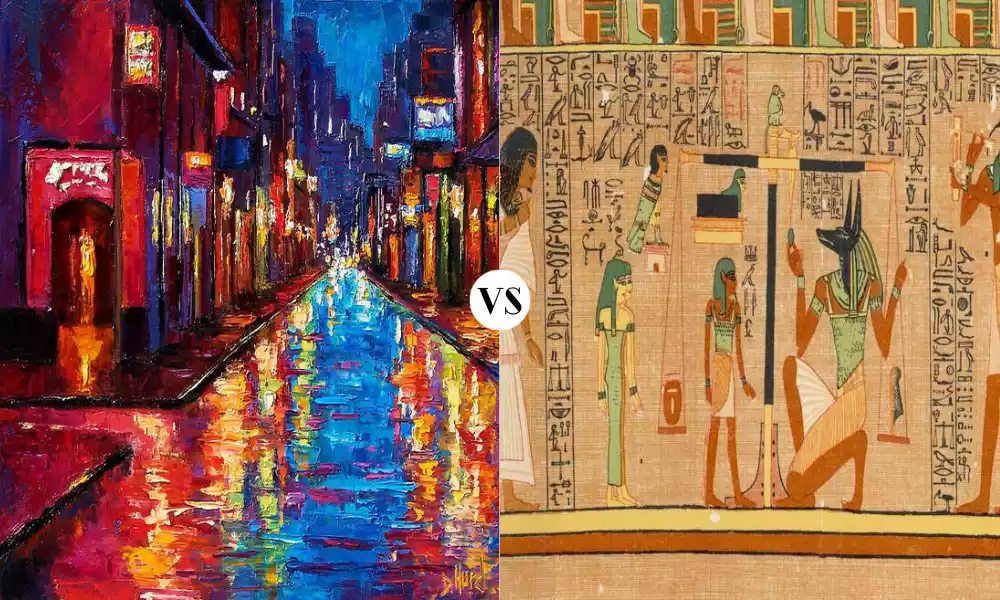Modern Art and Ancient Art represent two distinct eras in the timeline of artistic expression. Ancient Art, deeply rooted in history, provides a window into bygone civilizations, encapsulating their beliefs, traditions, and daily life through mediums like stone carvings, frescoes, and sculptures.
Modern Art, emerging around the late 19th century, breaks from tradition with its avant-garde approach, often characterized by abstract, experimental, and sometimes controversial themes. Both forms, while separated by time, showcase humanity’s perpetual desire to communicate, reflect, and challenge through visual mediums.
Historical context
Let’s delve into the historical context of both Modern and Ancient Art:
Ancient Art
Origins and Evolution:
- Prehistoric Art: This period includes cave paintings (like those in Lascaux and Altamira) and megalithic structures (like Stonehenge). They are testimonies to early human’s interaction with the environment and possibly their spiritual beliefs.
- Ancient Civilizations:
- Ancient Egypt: Art was deeply linked to religion and the afterlife. The grand pyramids, detailed hieroglyphics, and lifelike statues (like the Sphinx) were created with the intention to honor the gods and ensure immortality.
- Mesopotamia: The art from this region, which spans various cultures like the Sumerians, Assyrians, and Babylonians, provides glimpses of their daily life, beliefs, and kingship, showcased through ziggurats, cylinder seals, and cuneiform tablets.
- Ancient Greece: Starting from the geometric period and evolving through the classical era, Greek art emphasized proportion, harmony, and humanism. Iconic structures like the Parthenon and statues like the Discobolus are quintessential examples.
- Ancient Rome: Drawing heavily from Greek influence, Roman art integrated portraiture and depicted daily life, political propaganda, and mythological themes. Roman frescoes, mosaics, and structures like the Colosseum stand testament to their artistic prowess.
Purpose: Ancient art primarily served religious, commemorative, and functional purposes. Temples were built to honor gods, sculptures were erected to commemorate rulers, and pottery was decorated to narrate myths or used in daily life.
Modern Art
Origins and Evolution: Modern art, roughly from the late 19th to mid-20th century, emerged in a rapidly changing world. The Industrial Revolution, urbanization, and subsequent societal shifts dramatically affected the way people viewed themselves and their environments.
- Post-Impressionism: Artists like Van Gogh, Cézanne, and Gauguin began to emphasize personal expression and broke away from the realism and naturalism that dominated earlier in the 19th century.
- Symbolism: Rejecting the naturalism of Impressionism, artists like Gustav Klimt explored dreamy, moody, or even mystical themes.
- Cubism: Initiated by Picasso and Braque, this movement fragmented objects into geometric shapes, presenting multiple viewpoints simultaneously.
- Surrealism: Influenced by Freud’s work on the subconscious, artists like Salvador Dali and René Magritte explored dreamlike realms and irrational juxtapositions.
Purpose: Modern art shifted focus from representing reality to expressing inner emotions, subjective experiences, and personal interpretations. Art movements emerged as reactions to previous styles, societal changes, or to articulate new philosophies. They often served as critiques or reflections on modern society, politics, and the human psyche.
While ancient art was largely influenced by religious beliefs, societal needs, and functional purposes, modern art emerged in response to swift societal changes, technological innovations, and the evolving inner landscapes of individuals.
What is Modern Art?
Modern art refers to artistic works produced during the period extending roughly from the 1860s to the 1970s. It denotes the styles and philosophies of the art produced during that era. The term is usually associated with art in which the traditions of the past have been thrown aside in a spirit of experimentation. Modern artists experimented with new ways of seeing and with fresh ideas about the nature of materials and functions of art.
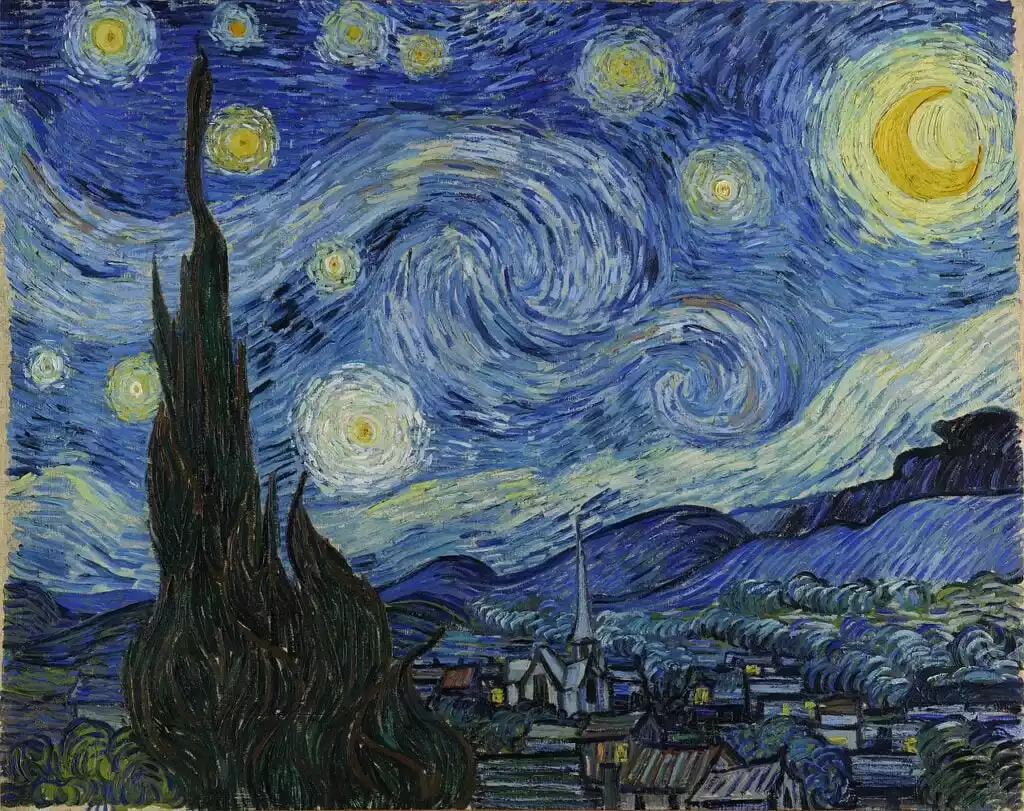
Key characteristics of modern art include:
- Rejection of Realism: Unlike traditional art forms which sought to portray reality as accurately as possible, modern art moved away from realism into abstract representations.
- Innovative Techniques: Modern art brought about a rapid and radical revolution in style with the use of new techniques and mediums.
- Emphasis on Material: There was an emphasis on the physicality of the artworks, such as the texture and form of the materials.
- Expressive: Artists sought to express their personal emotions and inner vision, sometimes leading to abstract and conceptual artworks.
- Challenging Traditional Boundaries: Modern art blurred the lines between various art forms. It brought about mixed media artworks and installations, breaking the traditional boundaries of art.
“Modern art” is a broad term which encompasses a variety of sub-movements such as Impressionism, Cubism, Surrealism, Abstract Expressionism, and others. Following the modern art period, we transition into “contemporary art”, which pertains to art produced from the 1970s until the present day.
What is Ancient Art?
Ancient art refers to the visual and material expressions created by early civilizations and cultures from prehistory to roughly the fall of the Roman Empire (around the 5th century AD). It encompasses a vast timeline and a multitude of regions and cultures. Ancient art provides insights into the religious, political, economic, and social structures of societies that created them, as well as their aesthetic values, technological capabilities, and worldviews.
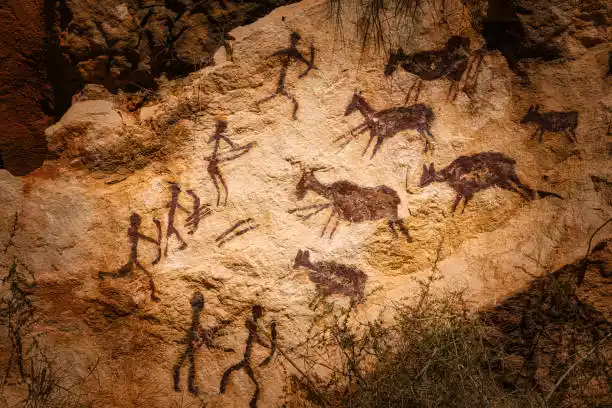
Key characteristics of ancient art include:
- Religious and Communal Significance: Much of ancient art was created for religious or communal purposes, such as sculptures of deities, architectural wonders like pyramids or temples, and communal gathering spaces.
- Symbolism: Symbols played a critical role in ancient art, often representing myths, legends, historical events, or religious beliefs.
- Functional and Utilitarian: While aesthetics was important, many items—like pottery, tools, or jewelry—served practical purposes in the daily lives of ancient peoples.
- Materials: The materials used often depended on the resources available in the region. This could include stone, clay, metals, wood, and various organic materials.
- Realism and Idealism: In various ancient cultures, especially in Egyptian or Classical Greek art, there was an emphasis on portraying subjects in an idealized manner, showing them at their best or most powerful. However, the degree of realism varied across cultures and time periods.
- Inscriptions and Hieroglyphs: Especially in civilizations like ancient Egypt, written scripts were often incorporated into art, providing context, stories, or religious incantations.
Examples of ancient art are vast and varied, including the cave paintings of Lascaux, the ziggurats of Mesopotamia, Egyptian pyramids and burial artifacts, Greek temples and statues, Roman frescoes and mosaics, and much more.
Ancient art not only serves as a testament to the artistic capabilities of early societies but also as a window into their beliefs, values, and daily lives.
Comparison table of Modern Art and Ancient Art
Here’s a comparison table highlighting key differences and similarities between Modern Art and Ancient Art:
| Aspect | Ancient Art | Modern Art |
|---|---|---|
| Time Period | Prehistory to roughly 5th century AD | Approximately 1860s to 1970s |
| Purpose | Religious, ceremonial, functional, commemorative | Individual expression, abstract representation, challenging norms |
| Themes | Religion, daily life, nature, rulers, warfare | Personal experiences, societal critique, abstract concepts |
| Style & Technique | Often emphasized proportion, symmetry, and established conventions | Rapid evolution of styles, breaking from tradition |
| Material & Medium | Locally available materials (stone, clay, bronze, wood) | Diverse range, including non-traditional materials |
| Role of the Artist | Frequently anonymous craftsmen working for communal or religious purposes | Central to the artwork; focus on artist’s perspective and individual vision |
| Audience Engagement | Primarily instructive; aimed at guiding in religious or societal values | Encourages personal interpretation; can be introspective or provocative |
| Cultural Context | Rooted in socio-religious and political contexts of the era | Influenced by industrialization, urbanization, and diverse ideologies |
| Representation | Often idealized, especially in certain cultures | Varied from realistic to abstract, often subjective |
| Art Movements | Defined by regions or civilizations (e.g., Egyptian, Greco-Roman) | Defined by styles and philosophies (e.g., Cubism, Surrealism) |
While the table offers a succinct comparison, it’s essential to understand that both forms of art have nuanced intricacies, influenced by a myriad of factors over time and geography. The distinction between ancient and modern art, as presented, is a generalized overview.
The Vibrance of Modern Art
Modern art, with its audacious expressions and break from traditional forms, showcases a vibrancy that resonates with the changing dynamics of contemporary life.
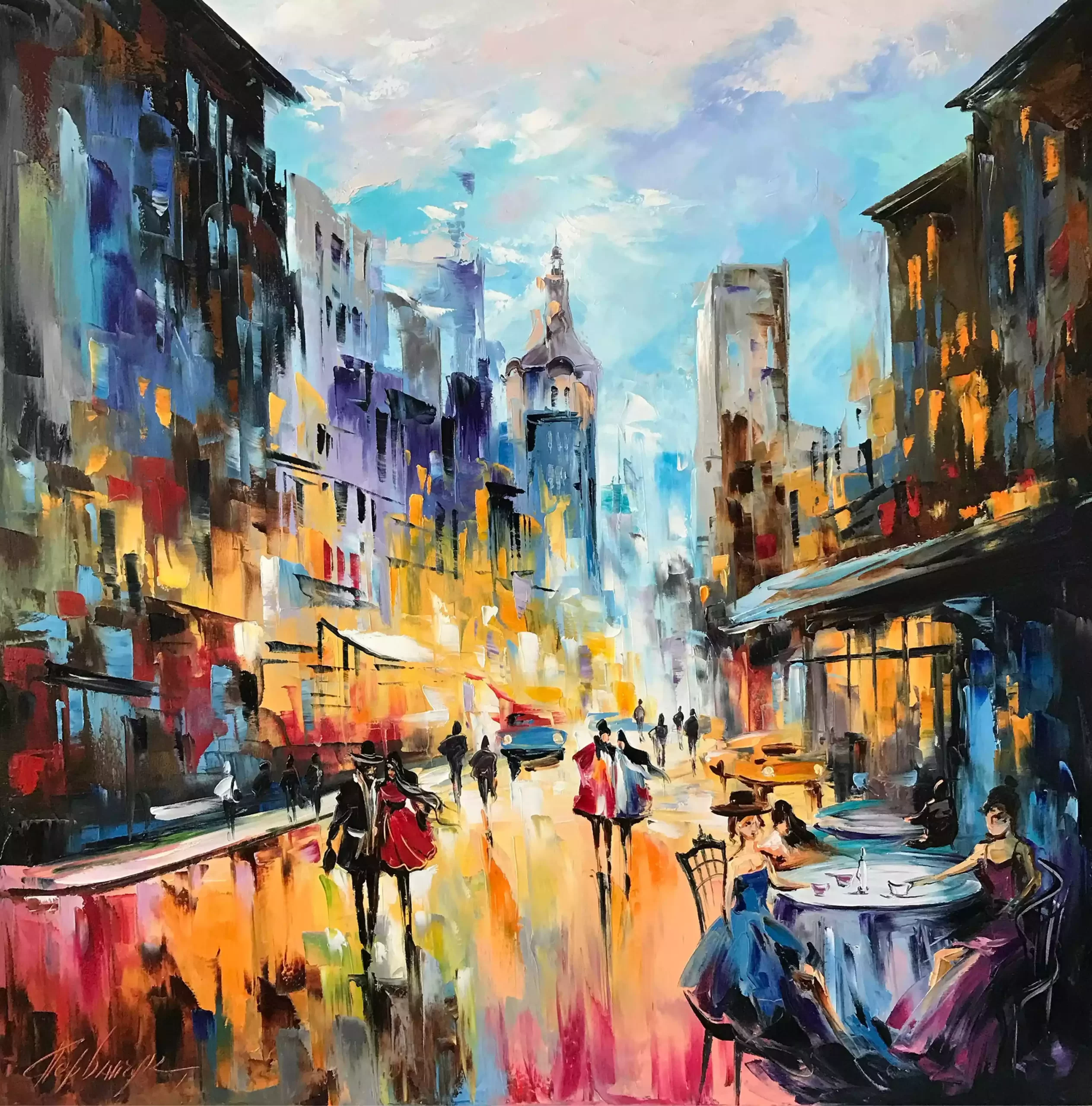
Here’s a dive into the vivacious allure of modern art:
- Rebellion and Innovation: Modern art is characterized by its willingness to break away from classical norms. This rebellious streak led to a plethora of innovative art movements, from Impressionism to Cubism, each showcasing a fresh perspective.
- Emotional Rawness: Unlike the restrained and often idealized depictions in ancient art, modern art often thrives on raw, unfiltered emotion. Whether it’s the anguish in Edvard Munch’s “The Scream” or the chaotic vibrancy of Jackson Pollock’s splatter paintings, the intensity is palpable.
- Diversity of Medium: Modern art has expanded its canvas, using a wide range of mediums, from found objects in Dadaism to the blend of visual art and literature in Surrealism. This diversification adds layers to the art’s vibrancy.
- Abstract Explorations: Abstract art, a significant segment of modern art, explores forms, colors, and patterns without the confines of reality. This abstraction allows artists to delve into the subconscious, dreams, and pure aesthetic appeal, leading to vibrant creations.
- Societal Commentary: Modern art often reflects the changing societal landscape, commenting on issues like war, industrialization, gender norms, and more. This makes it vibrant in its relevancy and immediacy.
- Global Influences: Modern art saw increased cross-cultural influences, with Western artists drawing inspiration from African, Asian, or Oceanic art. This melding of cultural aesthetics added richness and vibrancy to the artworks.
- Experimentation with Color: The use of color in modern art is bold and often symbolic. Artists like Vincent van Gogh or Henri Matisse used colors not just to depict reality but to convey emotions, leading to vibrant, captivating pieces.
- Personal Narratives: Modern art places significant emphasis on personal narratives and individual perspectives. This shift from collective to individual stories brings a diverse array of vibrant tales to the forefront.
- Interactivity and Immersion: Some modern art pieces, especially in later periods, are designed to be immersive and interactive, engaging the viewer in multidimensional ways. This dynamic engagement adds to the vibrancy of the experience.
- Challenging Conventions: Perhaps the most defining aspect of modern art is its penchant for challenging the status quo. Whether it’s questioning artistic norms, societal values, or perceptions of beauty, modern art is vibrant in its provocativeness.
The vibrancy of modern art lies in its dynamism, its constant evolution, and its reflection of the tumultuous, transformative periods it emerged from. It’s an art of exploration, emotion, and expression, capturing the essence of a rapidly changing world.
The Beauty of Ancient Art
Ancient art, with its timeless appeal and profound connection to our shared human history, offers a unique kind of beauty.
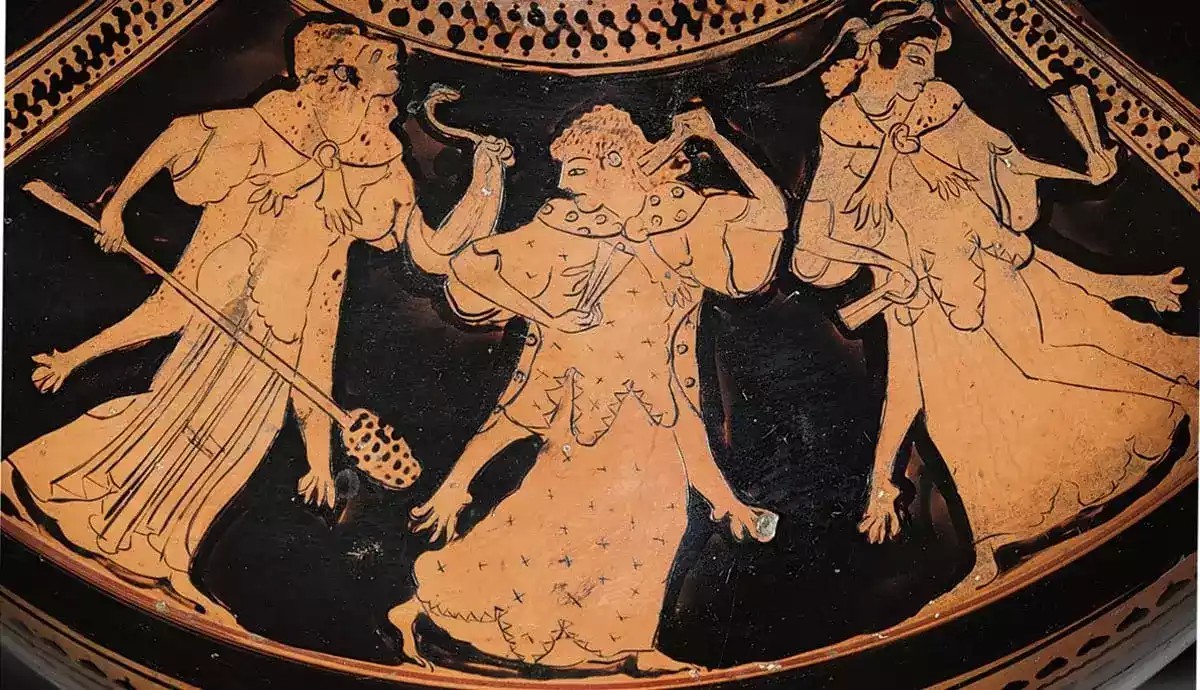
Here’s an exploration of the aesthetic and intrinsic beauty of ancient art:
- Testament to Civilization: Ancient art stands as a testament to the artistic prowess of early civilizations. Whether it’s the majestic pyramids of Egypt, the intricate sculptures of Greece, or the detailed frescoes of Rome, ancient art embodies the spirit, vision, and capabilities of cultures long gone.
- Material Mastery: Given the limited tools and resources available, the skill ancient artists showcased is extraordinary. They sculpted, carved, and painted with raw materials like stone, metal, and natural dyes, creating pieces that have withstood millennia.
- Symbolic Richness: Ancient artworks are replete with symbolism. Every stroke, curve, and hue often had a deeper meaning, whether religious, philosophical, or social. This symbolic layer adds depth and mystery, inviting viewers to unravel its intricacies.
- Narrative Beauty: Many ancient artworks tell stories—of gods, heroes, everyday life, or cosmic events. This narrative aspect transforms art pieces into visual chronicles, making them both aesthetically pleasing and historically informative.
- Authenticity: The untouched and unfiltered nature of ancient art gives it an authenticity that resonates deeply. In a world of digital reproductions and mass production, the genuine handcrafted nature of ancient art is especially cherished.
- Connectivity to the Past: There’s a profound sense of connection when one beholds ancient art. It’s a tangible link to our ancestors, their beliefs, aspirations, fears, and daily lives. This temporal bridge is beautiful in its ability to unite generations.
- Spiritual Essence: Many ancient artworks have deep spiritual undertones, crafted for religious ceremonies, rituals, or divine honors. This spiritual essence adds a serene, sacred quality that many find calming and transcendent.
- Cultural Diversity: The vast expanse of ancient art, from the cave paintings of Lascaux to the terracotta warriors of China, showcases the diverse aesthetic preferences of different cultures. This diversity is a testament to the multifaceted beauty standards of humanity.
- Idealism and Realism: Ancient art strikes a balance between idealism and realism. While many artworks, especially from civilizations like Greece, show figures in their ideal forms, others capture the raw, unfiltered essence of reality.
- Harmony with Nature: Many ancient art pieces, especially from indigenous cultures, showcase a deep respect for and harmony with nature. This bond, depicted in art, reminds viewers of the symbiotic relationship humans have always shared with their environment.
The beauty of ancient art lies not just in its aesthetic appeal but also in its ability to transport viewers across time and space, offering a window into the lives, beliefs, and visions of our ancestors. It’s a blend of form, function, and philosophy, echoing the voices of civilizations that laid the foundation for the contemporary world.
Contrasting Ancient and Modern Art
Contrasting Ancient and Modern Art provides insight into how artistic expression has evolved in response to changing societal, cultural, and philosophical landscapes. Here’s a comparison across various parameters:
- Purpose and Function:
- Ancient Art: Predominantly served religious, ceremonial, functional, or commemorative purposes. Artworks were often created to honor gods, commemorate rulers, depict myths, or serve practical needs (like pottery or tools).
- Modern Art: While it can also serve commemorative or functional purposes, there’s a pronounced emphasis on individual expression, abstract representation, and challenging established norms. Art became more about the artist’s perspective, societal commentary, and exploration of form.
- Themes and Subjects:
- Ancient Art: Largely focused on religion, daily life, nature, rulers, and warfare. The portrayal was often idealized, especially in societies like Ancient Egypt and Greece.
- Modern Art: Broader in scope, encapsulating a wide range of themes from personal experiences to abstract concepts. There was a shift towards introspection, societal critique, and breaking from convention.
- Style and Technique:
- Ancient Art: While there were many different styles across ancient civilizations, there was often an emphasis on proportion, symmetry, and adherence to established artistic conventions of the time.
- Modern Art: Marked by a rapid evolution of styles and techniques, often in deliberate breaks from previous conventions. Movements like Cubism, Surrealism, and Abstract Expressionism showcased this radical departure.
- Material and Medium:
- Ancient Art: Materials were often determined by what was locally available—like stone, clay, bronze, or wood. Techniques had been honed over generations.
- Modern Art: Expansion into a variety of materials, including non-traditional ones like plastics, steel, or found objects. The era saw a proliferation of mixed media art and innovative techniques.
- Role of the Artist:
- Ancient Art: Artists were frequently anonymous, especially in earlier periods, working under patronage systems or for communal purposes. Their role was often that of skilled craftsmen.
- Modern Art: The artist became central to the artwork. Their perspective, emotions, and intent gained prominence. Artists like Picasso, Van Gogh, or Frida Kahlo are known for their unique visions and personal styles.
- Engagement with the Audience:
- Ancient Art: Primarily instructive or didactic, aimed at educating or guiding the viewer in religious, moral, or societal values.
- Modern Art: Encourages personal interpretation, often challenging the viewer to question and think. Modern art can be deliberately provocative, introspective, or abstract.
- Cultural Context:
- Ancient Art: Deeply rooted in the socio-religious and political context of the time. It reflects the values, beliefs, and aspirations of ancient societies.
- Modern Art: Arising in a rapidly changing world shaped by industrialization, urbanization, wars, and diverse ideologies, it responds to and critiques these shifts.
While both ancient and modern art serve as mirrors to the times and societies in which they emerged, the former often adhered to established norms and conventions, whereas the latter frequently sought to challenge and redefine them.
How Ancient Art Influences Modern Creations
Ancient art has left an indelible mark on the trajectory of art history, and its influences can still be felt in modern creations. Here’s how ancient art continues to shape contemporary artistic endeavors:
- Foundational Techniques: Many techniques employed by artists today have their roots in ancient practices. For instance, the principles of perspective, shadowing, and sculpting techniques like lost-wax casting were refined by ancient artists.
- Symbolism and Mythology: Ancient myths, legends, and symbols still inspire modern artists. Greek and Roman mythologies, in particular, have been a rich source of inspiration, providing allegorical and narrative frameworks for contemporary works.
- Spiritual and Philosophical Themes: Ancient artworks, laden with spiritual significance, inspire modern artists to delve deep into human existence, morality, and the divine. For instance, the meditative qualities in ancient Buddhist or Hindu art can be seen influencing certain strands of contemporary art.
- Architectural Influence: Ancient architectural marvels like the Greek Parthenon or Egyptian pyramids have influenced modern architectural designs. Neo-classical and brutalist architecture, for example, borrow elements from ancient structures.
- Aesthetic Revivals: There have been periods, like the Renaissance and Neoclassicism, where artists and societies turned back to ancient art for inspiration, leading to revivals of ancient aesthetics. These revivals continue to influence contemporary art and design.
- Cultural Fusion: Modern artists, with access to global influences, often merge ancient art forms from various cultures to create fusion works. For instance, an artist might combine traditional African mask designs with ancient Greek sculpture techniques.
- Conceptual Echoes: The idea of representing power, divinity, or societal ideals through art is not new. Contemporary artists, while using modern mediums and methods, often explore these ancient themes but through a contemporary lens, critiquing or reimagining them.
- Narrative Techniques: Storytelling methods used in ancient art, like sequential narratives seen in Egyptian hieroglyphs or the Bayeux Tapestry, can be paralleled with modern comic strips or graphic novels.
- Reinterpretation and Critique: Modern artists sometimes reinterpret ancient artworks to critique both ancient and contemporary societal values. This could be seen in the feminist reimagining of classical myths or post-colonial interpretations of colonial art that borrowed heavily from ancient art of colonized regions.
- Material Inspiration: Ancient techniques, like mosaic-making, fresco painting, or terracotta sculpting, have been revived and adapted by modern artists to create contemporary artworks.
Ancient art serves as a rich tapestry of techniques, themes, and philosophies that modern artists can draw from. Whether they’re borrowing directly, reinterpreting, or even critiquing ancient themes, the influence of ancient art on modern creations is profound and multifaceted.
The Value of Both Eras in Contemporary Society
Both ancient and modern art periods offer invaluable insights and contributions to contemporary society. The melding of their influences shapes our aesthetic values, cultural understanding, and intellectual discourse. Here’s a breakdown of the value each era brings:
Value of Ancient Art in Contemporary Society:
- Cultural Roots: Ancient art provides a glimpse into the origins of civilizations, their beliefs, values, and practices. It helps contemporary society trace its cultural and historical roots.
- Timeless Aesthetics: The aesthetic principles, techniques, and materials from ancient art periods often serve as inspiration for modern designers, architects, and artists.
- Moral and Philosophical Foundations: Ancient artworks, with their deep ties to religious and philosophical beliefs, offer timeless moral tales and philosophical ponderings that continue to be relevant.
- Educational Value: Ancient art serves as primary evidence for educators in fields like history, archaeology, and cultural studies, helping students understand the evolution of human societies.
- Cultural Exchange: By studying ancient art from various regions, we foster cross-cultural understanding and appreciation, recognizing the interconnectedness of human civilizations over time.
Value of Modern Art in Contemporary Society:
- Reflection and Critique: Modern art often acts as a mirror, reflecting societal changes, challenges, aspirations, and anxieties. It critiques and questions societal norms and conventions.
- Expression and Freedom: Modern art stands as a testament to the freedom of expression, showcasing a myriad of perspectives, emotions, and ideas. It often encourages individualism and personal interpretation.
- Innovation and Experimentation: The plethora of styles, techniques, and materials in modern art inspire creativity and innovation, pushing boundaries and challenging the status quo.
- Therapeutic and Meditative Value: Modern art, with its abstract and introspective tendencies, often serves therapeutic purposes, helping individuals explore their emotions, traumas, or personal journeys.
- Global Dialogue: Modern art, especially in its later stages, transcends borders. International art movements and exchanges allow for global dialogues, fostering mutual understanding and shared human experiences.
The Confluence of Value in Contemporary Society:
- Holistic Understanding: Together, ancient and modern art offer a comprehensive overview of human artistic endeavor – from the primal expressions of early civilizations to the intricate contemplations of the modern mind.
- Bridging the Past and Present: Modern interpretations or reimaginings of ancient art help bridge the past and the present, making historical or cultural narratives relevant to contemporary audiences.
- Diverse Inspiration: Designers, filmmakers, writers, and artists today draw inspiration from both eras, creating a rich tapestry of works that resonate with a wide range of audiences.
Both ancient and modern art periods, with their distinct values, enrich contemporary society’s cultural, intellectual, and aesthetic landscapes. They provide context, inspire creativity, foster understanding, and drive forward discourse.
Conclusion
Modern Art and Ancient Art, while distinct in their temporal contexts and aesthetic approaches, together paint a comprehensive tapestry of human artistic endeavor. Modern art, with its pulsating drive for innovation, reflects the evolving ethos of contemporary society, pushing boundaries and redefining expression. In contrast, Ancient Art, rooted in age-old traditions, offers a glimpse into the foundational bedrock of our shared history, echoing the voices, beliefs, and aesthetics of bygone eras.
When juxtaposed, they provide a holistic narrative of the human spirit’s timeless urge to create, convey, and connect, highlighting the universality of art across time and space.

